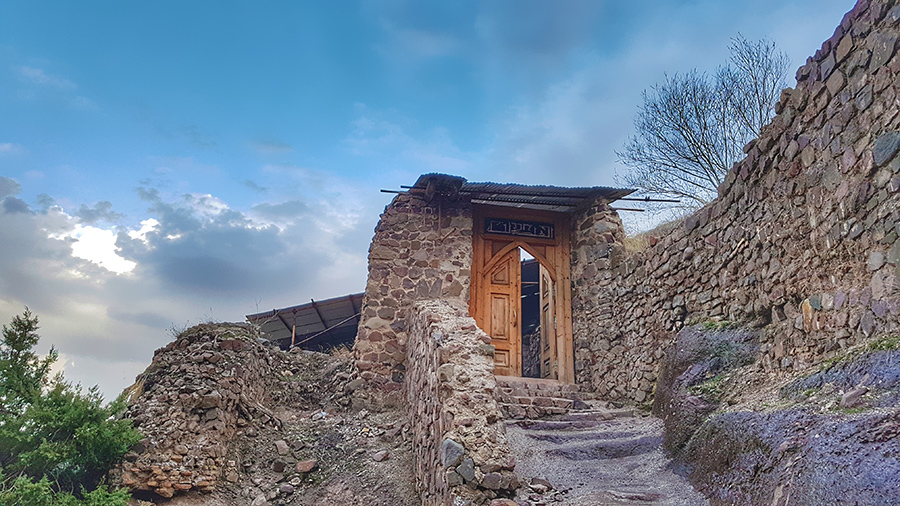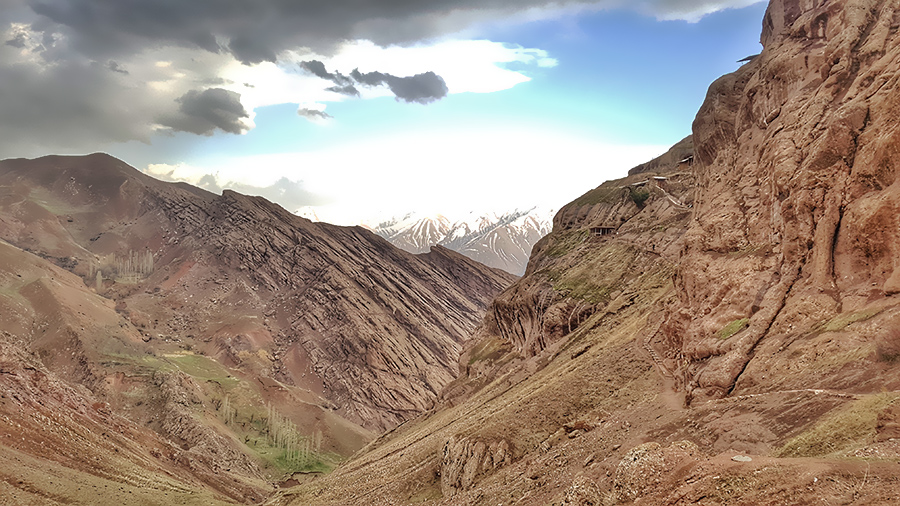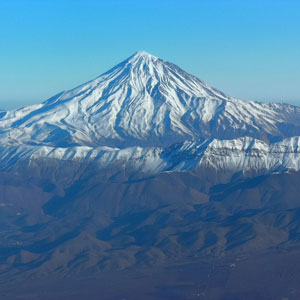 Signin with Google
Signin with Google Signin with Facebook
Signin with Facebook
 Places,History
Places,HistoryAssassins Valley of Alamut and the Dim Middle Age of Iran

The Castle of an Eagle
The eagle started to fly above the mountains, high and far, among the furthest clouds in the sky. The peaks were high but not as blustery as his reputation. The whole world was just a pale dot in his eyes. He nested in his haunting castle over the highest peak, a secret paradise everyone wished to visit: the castle of the lord of the mountains where Marco Polo wrote about.
Marco Polo and the Secret Garden of Paradise
The “old man of the Mountains” lived like a powerful eagle in a valley between rocks; his castle was known as a garden that was the largest and the most spectacular one ever could enter. When Marco Polo travelled to Asia, he heard the stories narrated about the secret garden. Later, he described the garden as a place where: “in it, were erected pavilions and the most elegant palaces that can be imagined, all covered with gilding and exquisite painting.” He noted that the Old Man desired to make his people believe that this castle was actually Paradise. But not everyone was allowed to see the secret paradise.
Hassan Sabah and conquering the Alamut Castle
Located on a rugged peak soaring above a fifty-kilometre-long valley, the Alamut castle was first built in about the 9th century AD. According to narratives, the location of the castle was founded by a king following an eagle on a hunting expedition who took this favourable omen as a sign of the strategic value of the place. He commanded the construction of an impregnable fortress and named it “Alamut,” meaning “the Eagle’s Nest.” But the castle did not last invincible and was conquered by another eagle. Two centuries later, in search of a safe base to settle and guide his followers, later known as “Hashashins” or “Assassins,” the young Hassan Sabah, conquered the castle and turned it into his headquarters. He declared a rebellion against the Seljuks and his followers assassinated Nizam al-Mulk, the Grand Minister, who had already given orders for his arrest. But the vizier was only one person among many who were assassinated by Hassan Sabah and his followers. the assassination was one of the methods adopted by Ismailis for reaching their religious and political goals in the dark times of the middle ages in Iran. Since Hassan Sabah and his followers employed this method as their military means against their factional opponents during this time, they became known as Assassins; even saying the name of Hassan-e Sabbah could make Caliphs be terrorized in Islamic capitals. This is what history tells us. However, the tales narrate different stories.

The “lord of Alamut” building a Paradise for Assassins
Soon after getting settled in Alamut, Hassan started a re-fortification of the castle. He equipped it with storage facilities and a developed irrigation system. He used the surrounding verdant plains as fields for cultivating crops and also built a large library inside as a significant centre for learning diverse sciences such as astronomy, philosophy and mathematics. The Alamut castle turned into a self-thriving stronghold having sufficient production and food in times of crisis and being enough forceful during the hard confrontation. Hassan was then known as “the Lord of Alamut”, and the castle was thought to be a paradise for Assassins: an unconquerable place that people outside the Alamut imagined to bestow heavenly gardens. Having heard all this myth, Marco Polo was convinced that Hassan enunciated to his followers a better life in a paradise as was pronounced in their religion. He made people who wanted to enter the paradise “drink a certain poison which cast them into a deep sleep and then caused them to be lifted and carried in. So, when they awoke, they would found themselves in the Garden”, which was believed to be the real Paradise. Some believe that the mentioned “poison” is the reason that these people were called “Assassins,” which is presumably derived from the word “Hashashin”. Whatever the reality might be, the Assassins were considered to live in happiness in paradise, yet it did not last long since the lord of Alamut got sick and the destiny of the castle faced a drastic change.
Alamut Castle after Hassan Sabah
In 1124, Hassan was suffering from a severe illness and he soon died. His grave was considered to be a sacred place for Assassins for years. The fate of the Alamut castle was impregnated with bewilderment; it confronted another invasion once again. In the mid-13th century, it was the Mongols who attacked the castle, burnt the library, slaughtered the Assassins, and destroyed many parts of the building to find the Assassins' treasures. Yet, similar to its geographical features, situated on top of a narrow, 180-meter-high rock, the Alamut castle is still standing gloriously strong, with lush sceneries on its feet and a spectacular lake, called Ovan, nearby. Until recently, there was no obvious sign of neither where fled Assassins settled after the Mongols' invasion, nor the place of the grave of Hassan Sabah. But, in the past years, archaeologists have found some tile works, including a tile narrated the epic of Rostam and Esfandiar from Ferdowsi’s Shahnameh, which are considered to be indications of the return of Assassins to the castle once again. Therefore, this may pave a way for new discoveries about the mysterious Alamut and the hope of finding the place where Hassan Sabah, the hero of the tragic epic of Alamut, is buried.
Travelling to Alamut
The ancient tile-works found in Alamut are undoubtedly precious in terms of unravelling historical mysteries. Still, the value of the castle goes beyond this. Passing through labyrinths of history and cohabiting with nature, the Alamut castle is now an indication of endurance and resistance in Qazvin Province just behind the southern face of the Alborz Mountains. Nestling splendidly on the shoulders of an eagle-shaped rock, and looking at the land of Alamut with its keen eyes, the castle invites you to watch one of the greatest dramas of nature. Whether being a nature enthusiast or a history admirer, the harmony in Alamut will haunt you: spectacular, picturesque sceneries composed of vast farming lands, blossoming fruit gardens, and green paddy fields with soaring mountains in the background. Having in mind the stories behind the Alamut castle while looking at these landscapes will be an unforgettable memory in any traveller’s mind.
By Sepideh Eghtedari / TasteIran


